Transistors are essential electronic components widely used in various applications, but their compatibility with alternating current (AC) signals is a common question. While transistors are primarily known for their effectiveness in direct current (DC) circuits, they can indeed work with AC signals, allowing for amplification, switching, and control.
However, it’s important to understand the considerations and limitations when using transistors with AC.
In this article, we will explore the behavior of transistors in AC circuits, their applications, and the factors that affect their performance when dealing with alternating current.
What Is A Transistor?
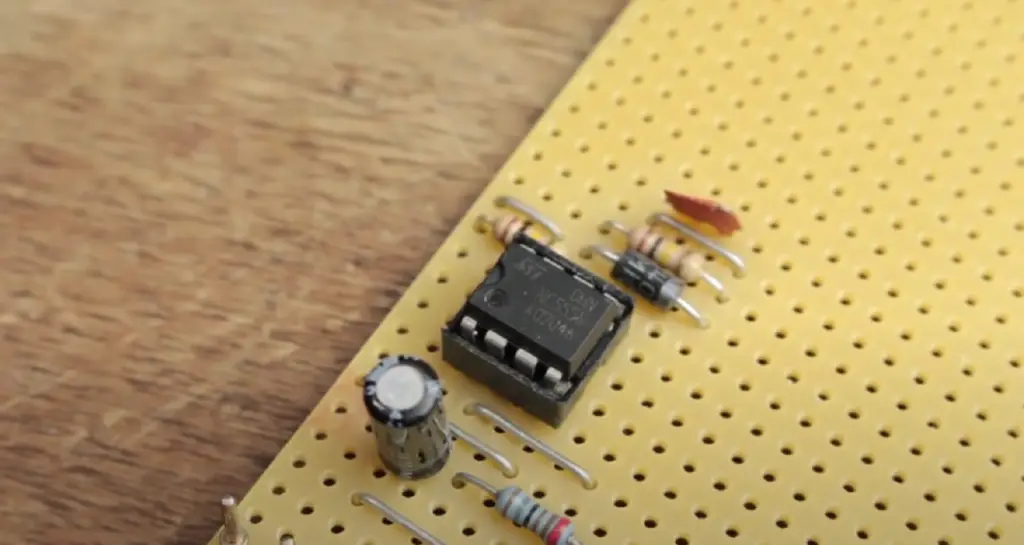
At its core, a transistor consists of three layers of semiconductor material: the emitter, base, and collector. The two most common types of transistors are bipolar junction transistors (BJTs) and field-effect transistors (FETs).
In a BJT, the current flow between the collector and emitter terminals is controlled by the current or voltage applied to the base terminal.
BJTs are further categorized into two types: NPN (negative-positive-negative) and PNP (positive-negative-positive).
The flow of majority charge carriers (electrons for NPN and holes for PNP) controls the current in a BJT.
FETs, on the other hand, work based on the voltage applied to the gate terminal. The voltage applied to the gate modulates the conductivity between the source and drain terminals. FETs are categorized as either N-channel or P-channel based on the majority charge carriers involved (electrons or holes).
By controlling the flow of current or voltage, transistors enable the amplification of weak signals, switching of digital signals, and regulation of power in electronic circuits. They are used in a wide range of electronic devices, including computers, televisions, smartphones, radios, and many other consumer electronics.
Why Are Transistors Important?
Transistors are an essential component in the modern world, and technology has been used since the 1950s. Transistors are responsible for many of our technological advances, and they have become incorporated into almost every electronic device. In fact, transistors are considered one of the most important inventions of all time [2].
Transistors can be found in a wide range of devices including computers, TVs, radios, cell phones, game consoles, and even medical equipment. They act like switches that control the flow of electricity within a circuit board or other electronic device. They allow for greater efficiency by allowing power to be converted from one form to another quickly and efficiently.
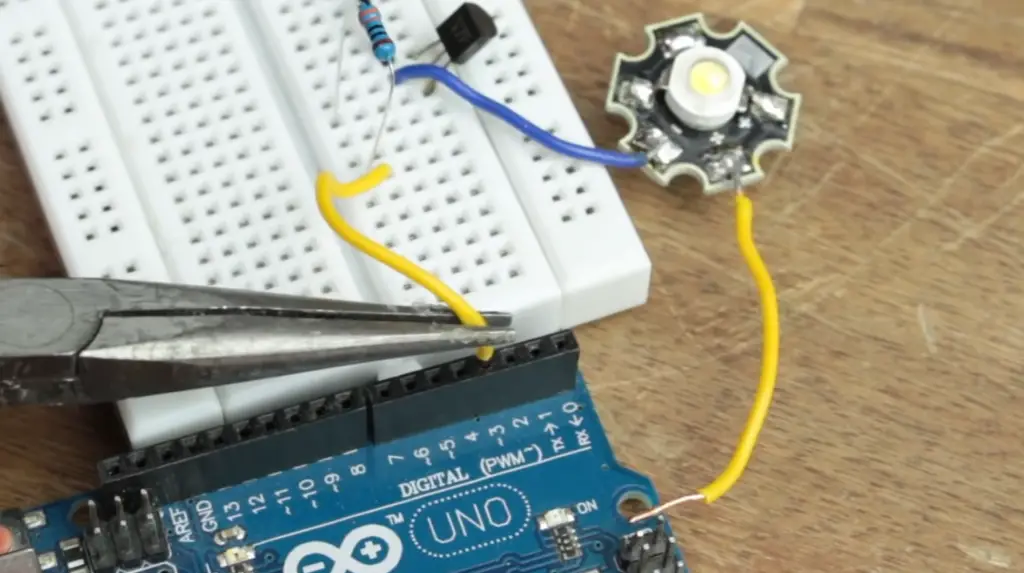
How Do Transistors Work?
Transistors are operated by the movement of electric current from one part of a circuit to another. Within a transistor, three layers act together — a base layer, which acts as an on/off switch, two other layers that act as collectors and emitters for electrons, and a third layer (the gate) that allows the voltage to pass through. When electricity passes through these three layers in the right combination, it triggers the transistor to open or close.
Parts Of A Transistor
A transistor is a three-terminal semiconductor device that is used to control the flow of electric current. The three terminals are called the base, the collector, and the emitter.
The base is the region situated between the emitter and the collector, and it is the part of the transistor that controls the flow of current between the emitter and the collector. The base is doped with a specific type of impurity to create either an N-type or P-type semiconductor, depending on the type of transistor.
The collector is the region of the transistor that collects the electrons that are injected into the emitter. The collector is also doped with either N-type or P-type impurities to create the appropriate type of semiconductor for the given transistor.
The emitter, on the other hand, is the region that emits the electrons into the transistor. The emitter is also doped with either N-type or P-type impurities to create the appropriate type of semiconductor for the given transistor [3].
Types Of Transistors
There are several types of transistors, each with its own characteristics and applications. The two most common types are bipolar junction transistors (BJTs) and field-effect transistors (FETs). Let’s explore these two categories and their subtypes.

1) Bipolar Junction Transistors (BJTs):
- NPN Transistor: This type of BJT has a layer of p-type semiconductor sandwiched between two n-type semiconductors. The majority charge carriers are electrons;
- PNP Transistor: Here, a layer of n-type semiconductor is sandwiched between two p-type semiconductors. The majority charge carriers are holes;
2) Field-Effect Transistors (FETs)
MOSFETs are further classified into:
- N-channel MOSFET: The majority charge carriers are electrons;
- P-channel MOSFET: The majority charge carriers are holes;
- JFET (Junction Field-Effect Transistor): It has a PN junction instead of a metal-insulator-semiconductor structure;
JFETs are further classified into:
- N-channel JFET: The majority charge carriers are electrons;
- P-channel JFET: The majority charge carriers are holes;
In addition to these main types, there are other variations and specialized transistors, including:
- Darlington Transistor: This is a configuration that consists of two BJTs connected together to amplify current;
- IGBT (Insulated Gate Bipolar Transistor): It combines the high voltage capability of a BJT with the high input impedance of a MOSFET, making it suitable for power applications;
- HBT (Heterojunction Bipolar Transistor): It utilizes different semiconductor materials with varying bandgaps to improve performance in high-frequency applications [4];
Each type of transistor has specific characteristics, such as voltage ratings, current-handling capabilities, switching speeds, and power dissipation. These characteristics make them suitable for different applications in electronic circuits, ranging from small-signal amplification to high-power switching. The choice of transistor type depends on the specific requirements of the circuit and the desired performance.
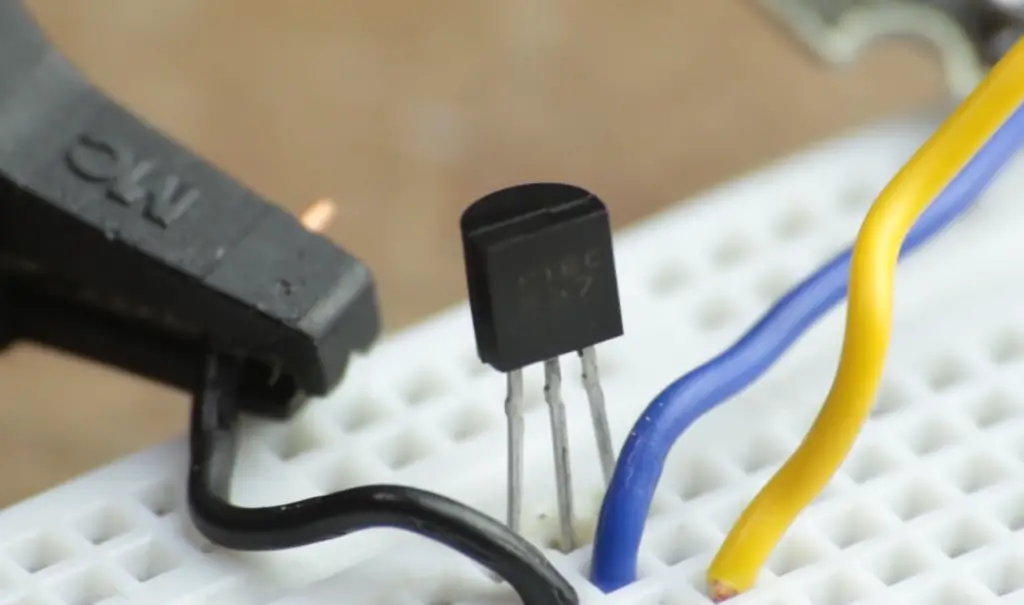
Do Transistors Only Work With DC And Not With AC?
Transistors can work with both DC (direct current) and AC (alternating current). While transistors are commonly used in DC circuits, they can also handle AC signals with appropriate biasing and circuit configurations.
In DC circuits, transistors are often used for amplification, switching, and regulation of voltage or current levels. The DC biasing of transistors is carefully set to operate within the desired operating region, such as the active region for amplification or the cutoff and saturation regions for switching applications.
When it comes to AC signals, transistors can amplify or process them, but it requires additional considerations. AC signals have continuously changing voltage or current levels that alternate in direction, usually following a sinusoidal waveform.
To use transistors with AC signals:
- Biasing: Transistors need proper DC biasing to ensure they operate in the desired active region. Biasing sets the operating point of the transistor to ensure it can effectively amplify or process AC signals;
- Coupling Capacitors: AC signals are often capacitively coupled into the transistor circuit to block any DC component. Capacitors allow the AC signal to pass while blocking any biasing or DC offset. This allows the transistor to amplify or process only the AC component;
- AC Amplification: Transistors can be configured as amplifiers to boost the strength of AC signals. AC coupling capacitors, along with appropriate resistors and feedback networks, are used to create AC amplification circuits;
- AC Switching: Transistors can also be used to switch AC signals on and off. This requires careful consideration of the biasing levels, voltage ratings, and switching speeds of the transistors [5];
It’s important to note that transistors have certain limitations when dealing with AC signals, such as frequency limitations and distortion at high frequencies. Specialized transistor types, such as high-frequency transistors, are designed to handle AC signals more efficiently in specific frequency ranges.

Can A Transistor Convert DC To AC?
A single transistor cannot directly convert DC (direct current) to AC (alternating current) on its own. A transistor is a semiconductor device primarily used for amplification, switching, and regulation of electrical signals. It operates based on the input signals applied to its terminals, but it doesn’t inherently generate an AC signal from a DC input.
However, by using additional components and circuitry, it is possible to build an oscillator circuit that uses transistors to convert DC to AC. An oscillator is a circuit that generates a periodic AC waveform. There are various types of oscillator circuits, and some of them utilize transistors as key components.
Here are a few examples:
- Transistor Astable Multivibrator: This is a common oscillator circuit that uses two transistors and a few passive components to generate a square wave AC signal. The charging and discharging of capacitors connected to the transistor bases create the alternating output;
- Transistor Hartley or Colpitts Oscillator: These are LC (inductor-capacitor) oscillator circuits that use transistors to generate sinusoidal AC signals. The inductors and capacitors, along with proper transistor biasing, determine the oscillation frequency;
- Transistor Wien Bridge Oscillator: This oscillator circuit employs transistors and a Wien bridge network of resistors and capacitors to generate a sine wave AC signal. The transistors provide the necessary gain and feedback to sustain oscillation;
In these oscillator circuits, the transistors, along with other components, create a feedback loop that produces an oscillating AC waveform. The specific circuit configuration and component values determine the frequency and characteristics of the output signal.
So, while a single transistor cannot directly convert DC to AC, oscillator circuits employing transistors can generate AC waveforms from a DC power supply by utilizing feedback and resonance principles.

Relays vs. Transistors – Their Characteristics:
- Transient Response: Relays are mechanical devices that have moving parts, which can result in slower transient response times. When a relay switches from one state to another, there may be a delay due to mechanical movement. In contrast, transistors are solid-state devices that can switch states much faster, offering a quicker transient response. This makes transistors more suitable for applications that require high-speed switching;
- Isolation: Relays provide excellent electrical isolation between the input and output circuits. When a relay is activated, there is typically complete galvanic isolation, preventing any electrical interference between the two circuits. On the other hand, transistors do not provide inherent electrical isolation. However, optocouplers or isolation amplifiers can be used with transistors to achieve isolation in certain applications;
- DC and AC Power: Relays are capable of handling both DC and AC power, making them versatile for various applications. They can switch high currents and voltages with ease. Transistors, particularly power transistors, are also capable of handling DC and AC power, but they generally have lower power handling capabilities compared to relays. Transistors are often used for low-to-medium power applications, while relays are employed for high-power switching;
- Lifetime: Relays have mechanical parts that can wear out over time, resulting in a limited lifetime. The number of mechanical cycles a relay can endure before failure depends on the specific relay construction and quality. Transistors, being solid-state devices, have a longer operational lifetime and can endure numerous switching cycles without significant degradation. However, transistors are still subject to other factors such as temperature and voltage stresses that can affect their longevity [6];

FAQ:
1. Can a transistor switch AC?
Yes, a transistor can be used to switch AC signals. By biasing the transistor appropriately and configuring it in the proper circuit, it can control the flow of AC current. However, it’s important to consider the transistor’s voltage and current ratings to ensure it can handle the AC signal’s characteristics.
2. Can a transistor work with DC?
Yes, transistors are commonly used in DC circuits. They can amplify, switch, and regulate DC signals effectively. By applying the appropriate biasing voltage or current to the transistor, it can operate in the desired mode for the given DC circuit application.
3. Can a transistor convert DC to AC?
A single transistor cannot directly convert DC to AC on its own. However, by using additional circuitry such as oscillators or inverters, transistors can be part of a system that converts DC to AC. These circuits generate AC signals by utilizing feedback mechanisms or switching techniques.
4. Can transistors rectify AC supply?
No, transistors, by themselves, cannot rectify an AC supply. Rectification is typically performed by diodes or rectifier circuits specifically designed for that purpose.
5. Can MOSFETs conduct AC?
Yes, MOSFETs can conduct AC signals. By applying appropriate voltage levels to the gate terminal, MOSFETs can control the flow of AC current through the source and drain terminals.
6. Is BJT used for AC or DC?
BJTs can be used for both AC and DC applications. They are commonly used in amplification, switching, and regulation circuits for both AC and DC signals.
7. Do MOSFETs work on AC or DC?
MOSFETs can work with both AC and DC signals. They can be used to amplify, switch, and regulate both types of signals, depending on the circuit configuration and biasing.
8. Can a transistor handle 12V?
The voltage handling capability of a transistor depends on its specific type and specifications. There are transistors available that can handle 12V and even higher voltages [7]. It is important to check the datasheet or specifications of the transistor to determine its maximum voltage rating.
9. Which transistor is used to convert AC to DC?
Transistors alone are not typically used to convert AC to DC. Rectifier circuits, such as diode-based full-wave or half-wave rectifiers, are commonly used for converting AC to DC.
10. What is an AC vs DC transistor?
There is no specific categorization of transistors as AC or DC transistors. Transistors can work with both AC and DC signals depending on their characteristics, circuit configuration, and biasing.
11. Can MOSFET convert DC to AC?
A single MOSFET cannot directly convert DC to AC. However, by using additional circuitry, such as oscillators or inverters, MOSFETs can be part of a system that converts DC to AC.
12. Can a single diode convert AC to DC?
A single diode, such as a rectifier diode, can be used to convert AC to DC. By utilizing the diode’s property of allowing current flow in only one direction, a rectifier circuit can rectify the AC signal into a pulsating DC signal.
13. Can a triac switch AC?
Yes, a triac is a semiconductor device that can switch AC signals. It is commonly used in AC power control applications, such as in dimmer switches, to regulate the amount of power supplied to AC loads.
14. Can transistors generate electricity?
Transistors are active devices that can amplify or switch electrical signals, but they do not generate electricity on their own. They require an external power source to operate and perform their intended functions.
15. Can a transistor power itself?
No, a transistor cannot power itself. It requires an external power source to operate. The power source supplies the necessary voltage or current to bias the transistor and enable its functionality.
16. Is a transistor an inverter?
A transistor can be used as part of an inverter circuit. Inverters are circuits that convert DC to AC or vice versa. Transistors, along with other components, can be utilized in such circuits to achieve the desired inversion functionality [8].
17. What is the AC voltage gain of a transistor?
The AC voltage gain of a transistor refers to the amplification factor it provides to an AC signal. The voltage gain is typically specified in the transistor’s datasheet and depends on various factors, such as the transistor’s configuration, biasing, and load conditions.
18. Do transistors work as capacitors?
No, transistors do not work as capacitors. Transistors are active electronic devices that control the flow of current, while capacitors store and release electrical energy in the form of charge.
19. What is the maximum voltage of a transistor?
It varies depending on the transistor type, design, and construction. Different transistors have different voltage ratings, and it is important to select a transistor that can handle the specific voltage requirements of the application.
20. How much power can a transistor handle?
The power handling capability of a transistor depends on its specific type, package, and thermal considerations. Transistors are rated for maximum power dissipation, which indicates the amount of power they can handle without overheating or getting damaged.
21. Does a transistor limit current?
Transistors can be used to limit current by employing them in current-limiting circuits or by incorporating resistors or current-limiting components in the transistor’s biasing network. However, transistors by themselves do not inherently limit current.
22. Can a 5V motor run on 12V?
It is generally not recommended to run a 5V motor directly on a 12V power supply [9]. The higher voltage can potentially damage the motor or cause it to operate outside its intended specifications. It is advisable to use a power supply that matches the voltage requirements of the motor.
23. Why are MOSFETs better than transistors?
MOSFETs (Metal-Oxide-Semiconductor Field-Effect Transistors) are a type of transistor and are widely used in many applications due to their advantages over other transistor types. MOSFETs offer high switching speeds, low power consumption, low on-resistance, and good thermal stability, making them suitable for various power electronic applications.
24. Can I use a MOSFET instead of a transistor?
Yes, in many cases, a MOSFET can be used as a replacement for a conventional transistor, depending on the specific requirements and circuit configuration. However, it’s important to consider the voltage, current, and switching characteristics of both devices to ensure compatibility and proper operation.
25. Is a MOSFET an inverter?
A MOSFET can be part of an inverter circuit, but a MOSFET alone does not constitute an inverter. Inverter circuits typically utilize multiple components, including MOSFETs, to convert DC to AC or vice versa.
26. Can MOSFET handle high current?
Yes, MOSFETs can handle high current levels, especially power MOSFETs that are designed for high-power applications. Power MOSFETs are specifically engineered to handle higher current ratings and are commonly used in applications requiring high current switching.
27. Is MOSFET voltage or current controlled?
MOSFETs are voltage-controlled devices. The voltage applied to the gate terminal controls the MOSFET’s conductivity and determines the current flow between the source and drain terminals.
28. Can a MOSFET act as a switch?
Yes, MOSFETs are widely used as electronic switches. By applying the appropriate voltage or current to the gate terminal, a MOSFET can control the flow of current between the source and drain terminals, effectively acting as a switch.
29. Do diodes block AC signals?
Diodes do not block AC signals entirely, but they allow the current to flow in one direction while blocking or significantly reducing current flow in the opposite direction. Diodes are commonly used for rectification, which involves converting AC to pulsating DC by allowing only the positive half of the AC signal to pass.
30. What can damage a transistor?
Transistors can be damaged by exceeding their maximum voltage, current, or power ratings. Excessive heat, voltage spikes, electrostatic discharge (ESD), improper biasing, and incorrect wiring can also cause transistor damage. It’s important to operate transistors within their specified limits and handle them properly to avoid damage.
Useful Video: Electronic Basics #22: Transistor (BJT) as a Switch
References
- https://www.techtarget.com/whatis/definition/transistor
- https://www.physicsforums.com/threads/do-transistors-only-work-with-dc-and-not-with-ac.966203/
- https://electrotopic.com/can-transistors-work-with-ac/
- https://electronics.stackexchange.com/questions/2010/using-a-transistor-with-ac
- https://www.ultralibrarian.com/2021/02/09/relays-vs-transistors-which-is-the-correct-choice-ulc
- https://physics.stackexchange.com/questions/606366/how-is-alternating-current-ac-used-in-bipolar-junction-transistor-bjt-withou
- https://forum.arduino.cc/t/switching-ac-with-transistors/545277
- https://saaubi.people.wm.edu/TeachingWebPages/Physics252_Spring2009/Week7/LabManual_Chpt7.pdf
- https://www.vedantu.com/question-answer/can-a-transistor-convert-dc-to-ac-class-12-physics-cbse-6114dfb844a5e85be56c0ecb





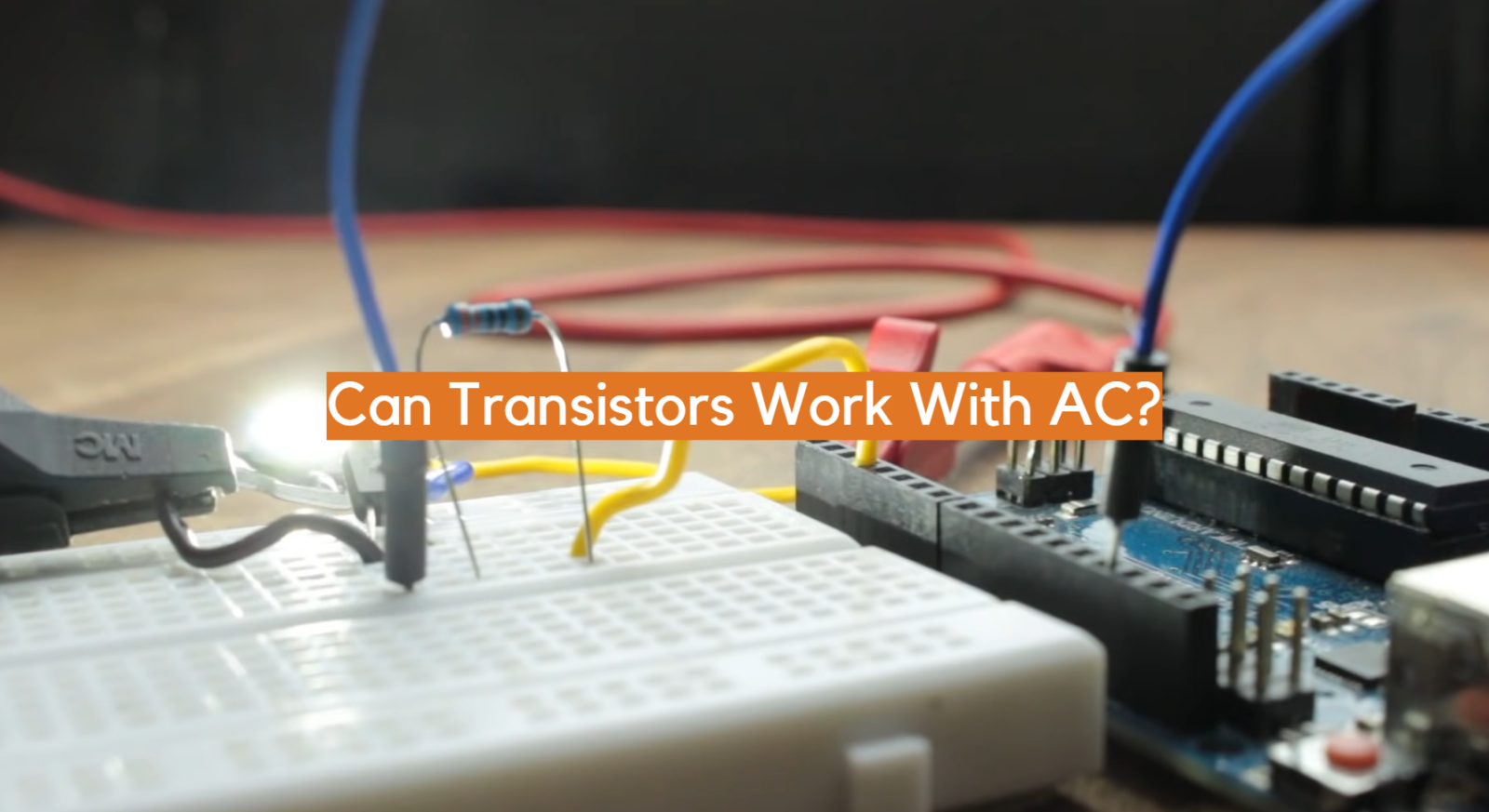






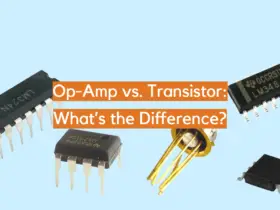
Leave a Reply